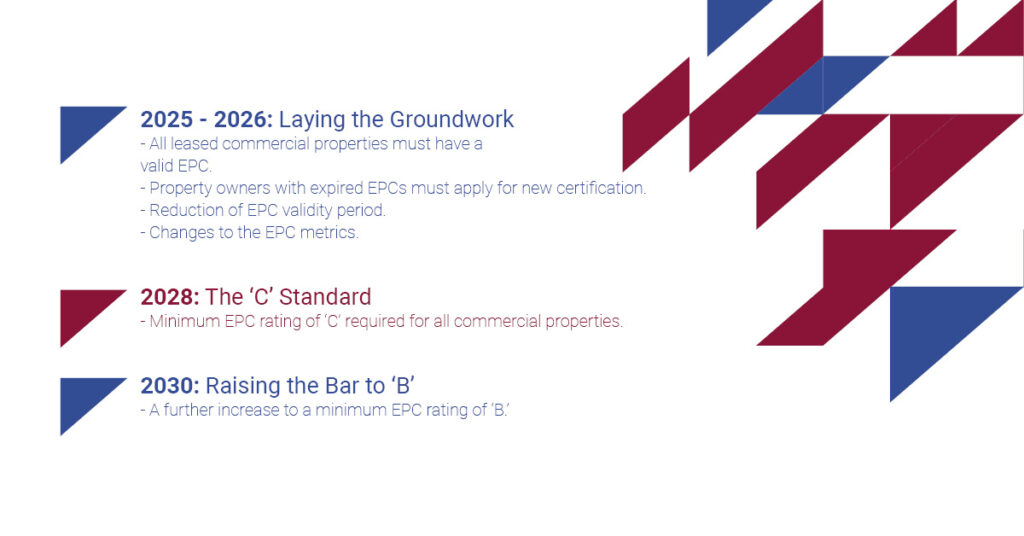The EPC Squeeze: Why Landlords Might Need to Shape Up or Ship Out
Written by
With the clock ticking towards the anticipated EPC (Energy Performance Certificate) changes, the UK’s commercial property landscape could face a seismic shift.
What is an EPC?
An EPC details the energy efficiency of a particular building. It places the building on a scale from A (the most energy efficient) to G (the least efficient). Currently, EPCs are valid for 10 years.
What are the Minimum Energy Efficiency Standards?
Introduced in 2015, the Energy Efficiency (Private Rented Property) (England and Wales) Regulations 2015 set a minimum EPC rating for rental properties. The minimum EPC rating is currently set at an E, with the rules apply to both domestic and non-domestic private rented properties.
Investors who have buildings with an EPC rating of F or G cannot continue to rent out their properties nor grant new tenancies (unless they qualify for an exemption).
The Big Change: What’s Happening?
From 2027, it is anticipated that the minimum EPC threshold will jump to ‘C,’ and by 2030, it is expected that the bar will be raised even higher to ‘B.’ This means a vast number of buildings will suddenly be classified as “substandard,” leaving landlords with two options: invest in upgrades or offload their properties.
The Consequence for Non-Compliance
Currently, there are serious financial penalties for letting or continuing to let a substandard property with fines of up to £150,000.
By the Numbers
The scale of the challenge is significant:
- 28% of commercial properties are currently rated ‘D’ or lower, putting them at risk of non-compliance by 2028.
- 73% of office spaces in England and Wales fall below the future standard.
- In regional office spaces, only 20% of those occupied by listed companies meet the 2030 standard, highlighting a stark supply gap for high-efficiency buildings.
- London is leading the charge, with 74% of office leases in 2023 meeting the new standard—up from just 50% in 2018. But the shift has been slow elsewhere.
The Ripple Effect: What does this mean for Landlords and Investors?
For landlords, this is a classic carrot-and-stick situation. On one hand, failing to meet the new EPC requirements could mean being unable to let you property or being forced to sell at a discount. On the other, properties that do make the grade will be in high demand—commanding stronger rents, benefiting from better financing terms, and attracting sustainability-conscious tenants.
But let’s not forget another key takeaway: a wave of non-compliant properties hitting the market could create a rare investment opportunity. Those willing to take on inefficient buildings and upgrade them could find themselves ahead of the game as stricter standards roll out.
The Countdown: Key Milestones

Please note the above timeline highlights the expected dates.
The Bottom Line: Stay Ahead or Fall Behind
The EPC shake-up isn’t just another regulatory headache—it’s a game-changer that will redefine commercial real estate investment, lending, and leasing. Those who act early to future-proof their properties will benefit, while those who wait may find themselves scrambling. Whether you’re a landlord, investor, or tenant, now is the time to assess where your properties stand and plan your next move.

